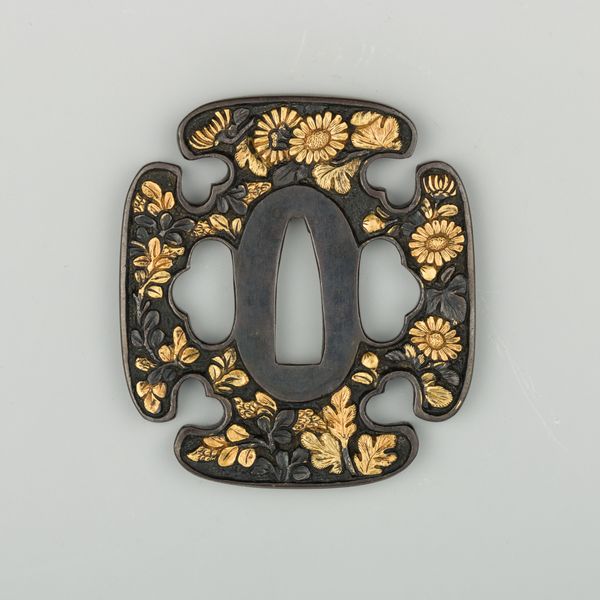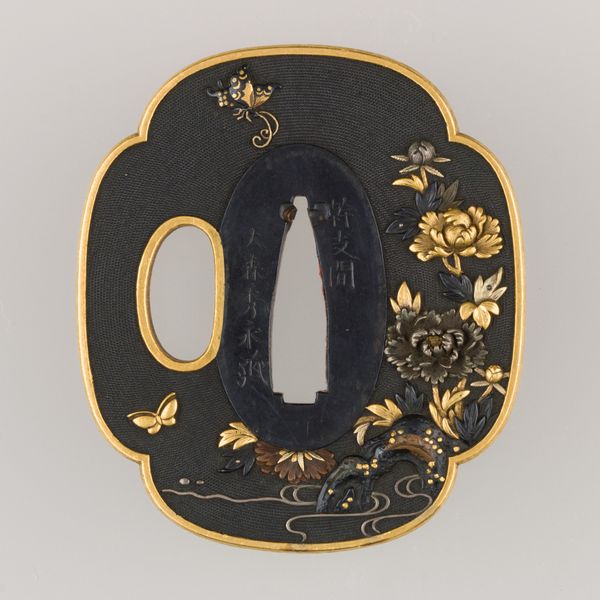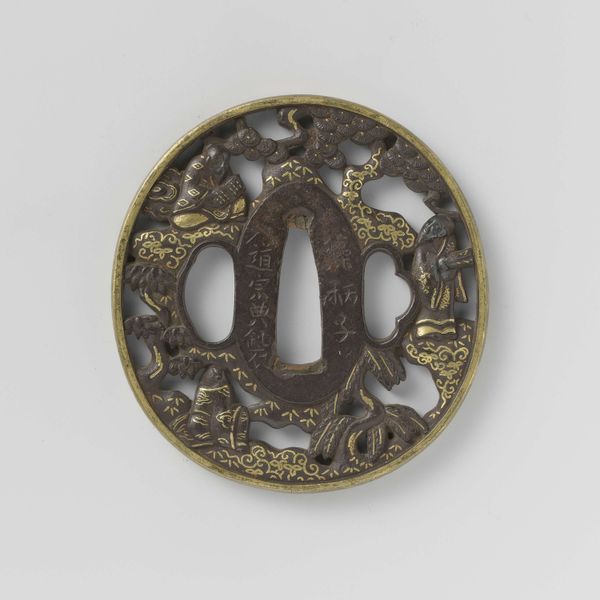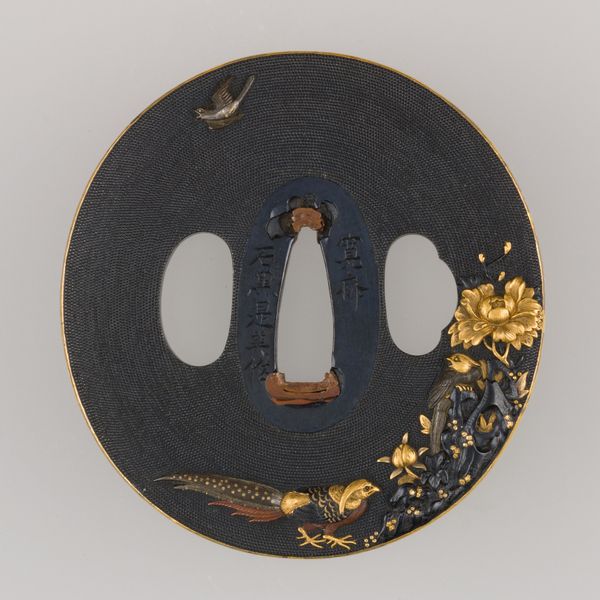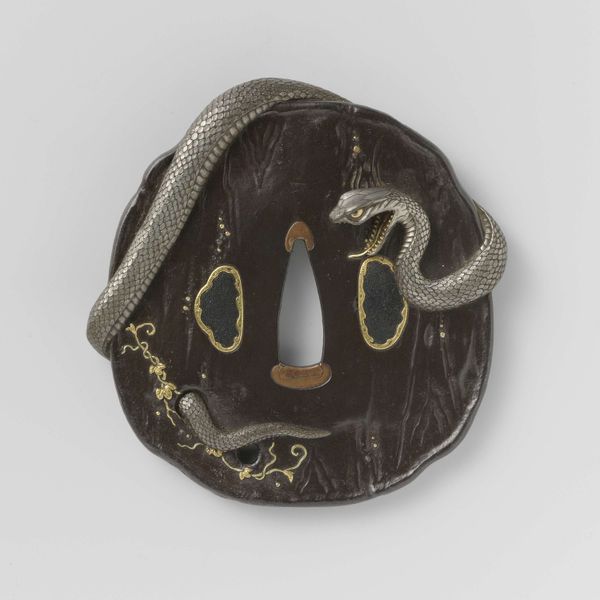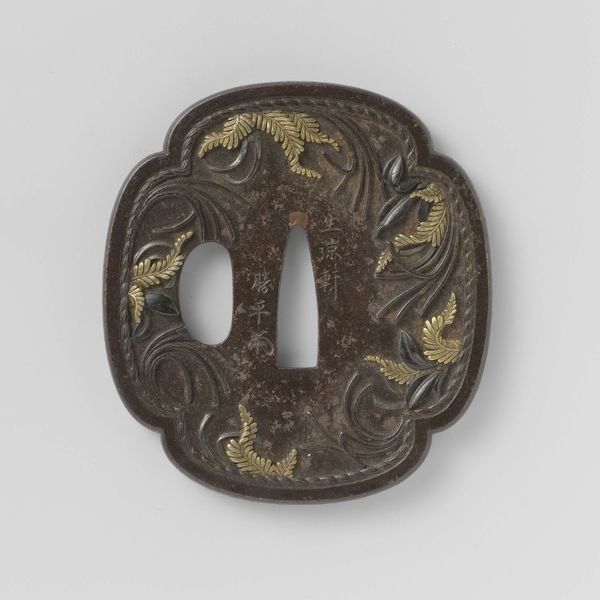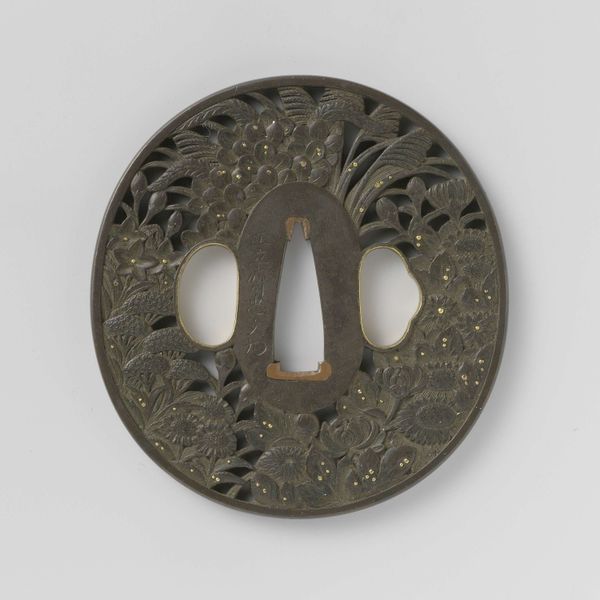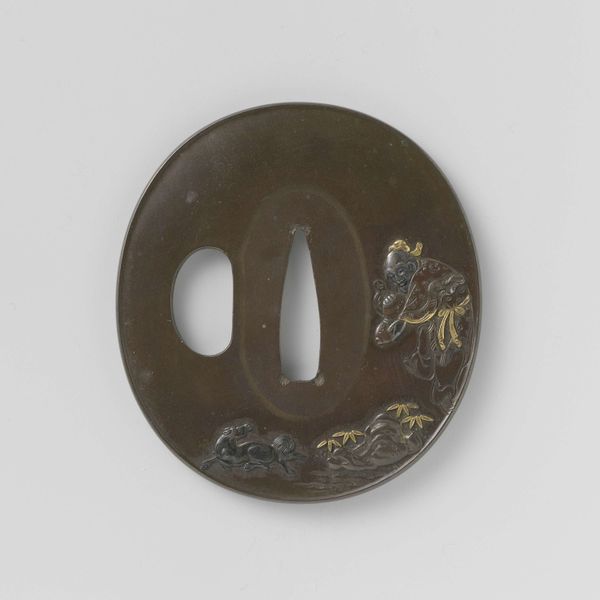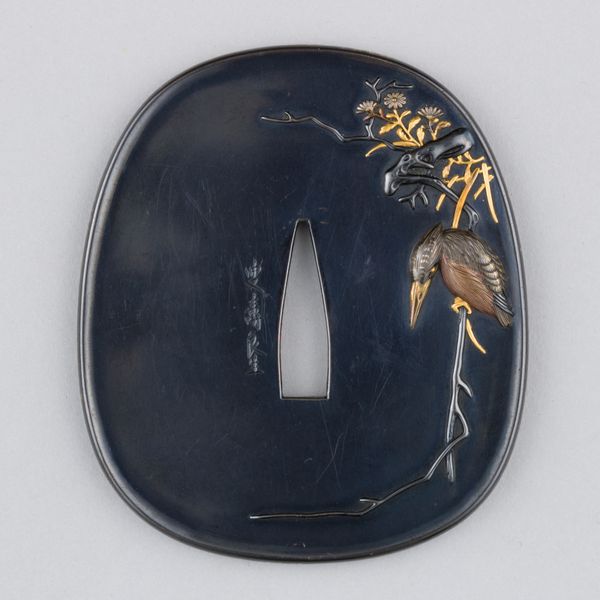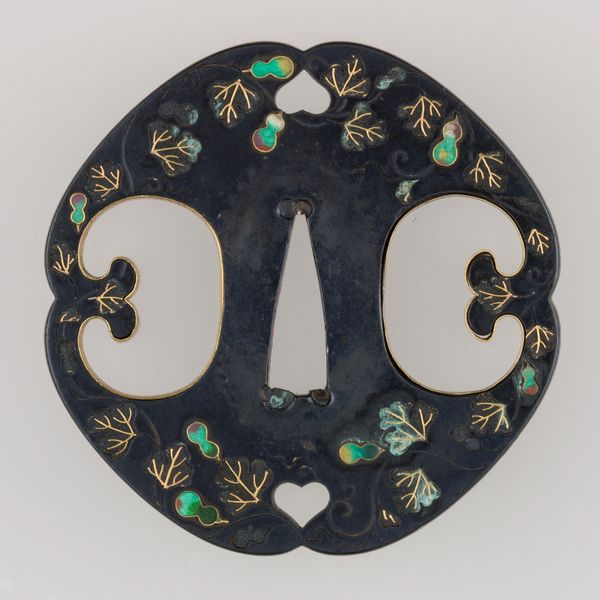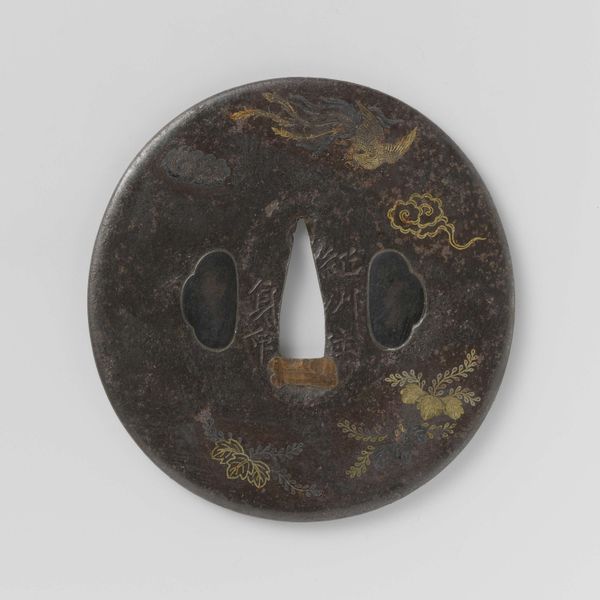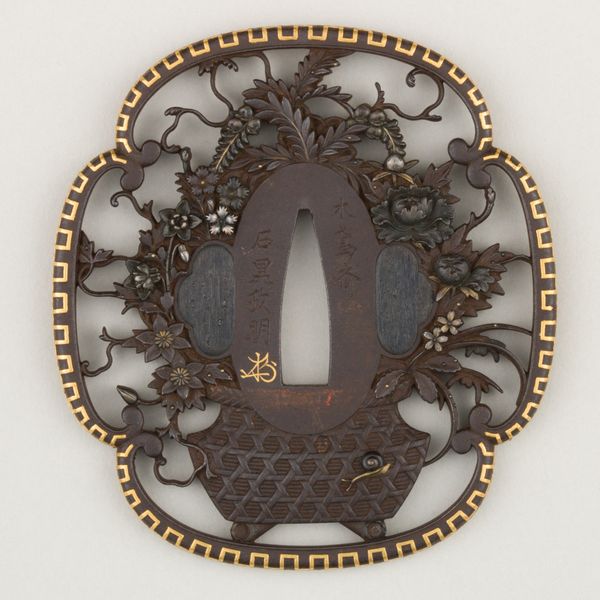
metal
#
metal
#
asian-art
#
japan
#
armor
#
decorative-art
#
sword
Dimensions: H. 3 in. (7.6 cm); W. 2 3/4 in. (7 cm); thickness 3/16 in. (0.5 cm); Wt. 5.2 oz. (147.4 g)
Copyright: Public Domain
Curator: What a striking piece of metalwork. We're looking at a Japanese sword guard, or tsuba, created by the Ko-kinko school between 1550 and 1600. You can see it now on display here at the Metropolitan Museum of Art. Editor: It's so delicate! The black field, with its golden floral inlays, suggests a balance of power and elegance. Curator: Exactly. Tsuba, like this one, served as hand guards on swords but also evolved into highly decorative elements, reflecting the owner's status and aesthetic sensibilities within samurai culture. Editor: The Ko-kinko school were quite well known as metalworkers at the time, right? I’m struck by the artistry in the rendering of the flowers and vines, how the metallic luster creates contrast and the empty space at the center accentuates the details around the edges. Curator: Yes, the Ko-kinko school was celebrated for their refined metalworking techniques. This piece really underscores their expertise. Tsuba moved beyond mere functionality to become an independent art form during this period, gaining recognition in exhibitions. The designs often incorporated symbolic motifs referencing nature, literature, or folklore, embodying a samurai's aspirations, virtues, and affiliations. Editor: And how does this cultural significance inform the construction itself? Does it have a traditional shape or form? Curator: Certainly. The material itself—metal—speaks to the practical necessities of battle. Yet the shape, a modified circle adorned with these graceful flowers, shows the refined tastes upheld by the samurai class. In many ways, it reveals how decorum served as another method of demonstrating prowess and superiority on and off the battlefield. Editor: It's really quite something to consider this object—functional and beautiful—both as an indicator of its owner’s persona and a marker of his socio-economic status. Curator: Agreed. Considering this tsuba, it is more than just an artifact. It encapsulates a transformative moment in the history of Japanese decorative arts, wherein metalwork blossomed into a sophisticated and highly regarded art form. Editor: And a form blending functionality with an undeniably artistic flair.
Comments
No comments
Be the first to comment and join the conversation on the ultimate creative platform.
